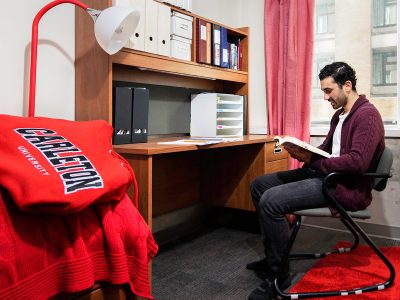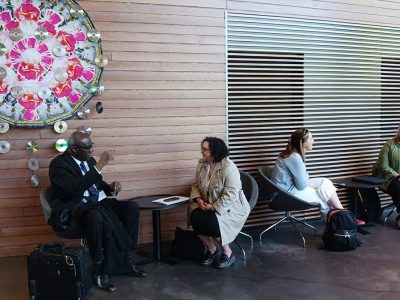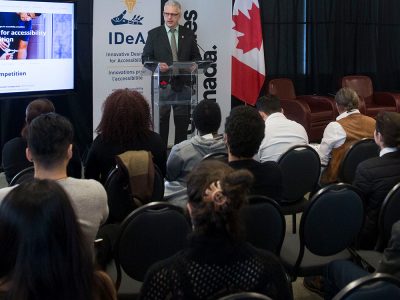By Tyrone Burke
Photos by Justin Tang
With clouds almost constantly overhead, Lima seems the unlikeliest of deserts.
The sun shines only 1,284 hours per year in the Peruvian capital. It’s greyer than Vancouver, but despite the cloud cover and tropical Pacific location, Lima has no rainy season. It receives just a few centimetres of rain each year, and with 10 million mouths to feed – many belonging to poor, rural migrants – food security is an urgent issue.

Lima, Peru
“Lima is in the desert, and it’s extremely vulnerable to external shocks,” says Lieven Pype of Canadian University Service Overseas (Cuso) Peru, “including droughts, floods, access to food and earthquakes.”
With its Feeding Lima from Within project, Cuso Peru is seeking to alleviate Lima’s food security issues, and empower Limeños with healthy, nutritious food and improved community organization. It’s a 30-month initiative to strengthen urban agriculture that will convert existing gardens into urban agriculture hubs, create a fair trade labelling system for local produce and more. It uses a multi-stakeholder model that brings together NGOs, universities, producers associations, networks and other organizations.

Researching Key Issues in Urban Agriculture
A Carleton University course called Global International Group Project: Food Security in Lima, Peru is one of them. This offering from the Bachelor of Global and International Studies program focuses on e-voluntarism and experiential learning. Its 21 students contributed research on key issues in urban agriculture for Feeding Lima from Within and presented their findings to the team in Lima via Skype.
“Our class was tasked with four goals,” says instructor Marylynn Steckley. “Research policies and practices of urban agriculture in Latin America and the Caribbean; investigate agricultural possibilities for Lima; identify researchers and organizations that would be helpful for Cuso Lima to connect with; and identify marketing initiatives that will serve Lima well as it seeks to advocate for local food systems and dignify local producers.”
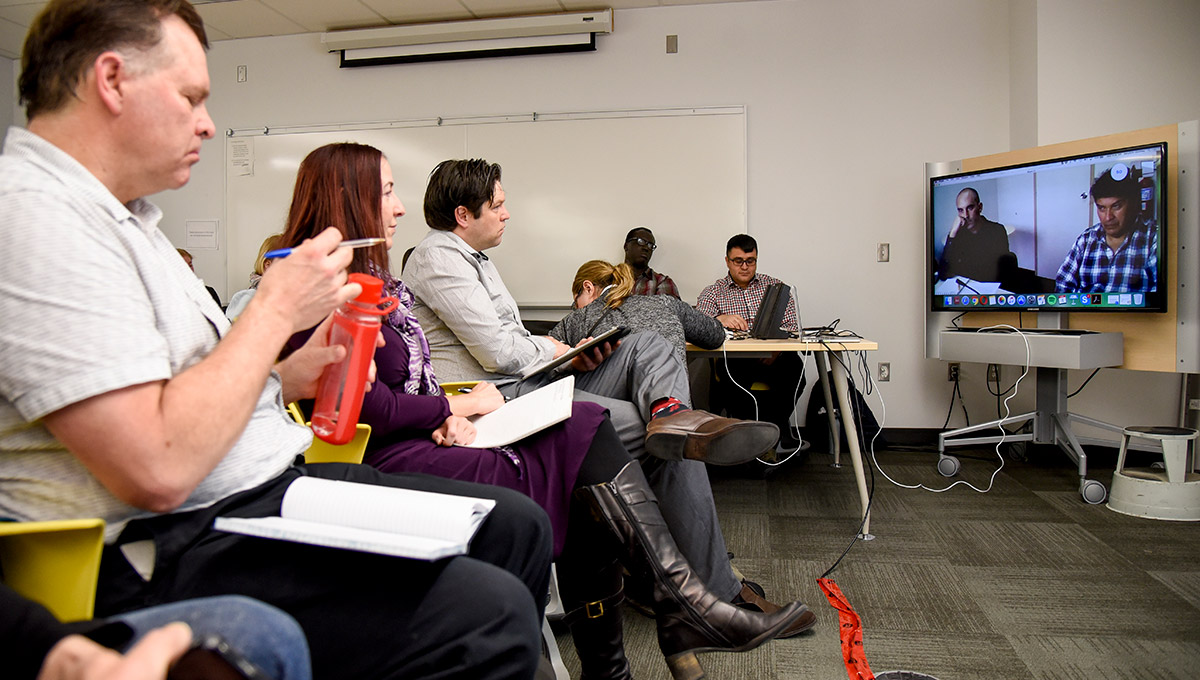
Students presented their findings to the team in Lima via Skype
Peru’s lack of water is just one factor in food security. It’s also vulnerable to erosion. Students Hailey Climenhage, Seth Eichhorst and Lauren Ogden suggest that vertical farming – where food is grown in stacked layers — is one way to help preserve Peru’s remaining soil.
“Vertical gardening ties directly into the idea of more dispersed community gardens,” Ogden says. “It can be done virtually anywhere. It’s low-tech, energy efficient and significantly less water intensive than traditional gardening. It requires no soil, so it can help preserve remaining arable land, while also reducing pressure to overwork remaining soil.”
Peru is also a major producer of gold, lead, silver and zinc, and waste-contaminated water disproportionately impacts poor and Indigenous people. With their short documentary Climate Change and Water Scarcity in Lima, Peru, students Emily Monchamp, Hansimran Hans, Ghulam Faizi, Anjali Shanmugam and Daniel Omara advocate education to ensure those impacted by contamination know their rights, and looked to Bangladesh for a possible solution. In 1999-2005, arsenic contamination there was widespread. After testing 5,000 wells across the country, the government treated them, prioritizing the most contaminated.
In our interconnected world, parallels come from unexpected places. Jessica Hennessy and Chanel Reid explored the possibility of partnerships with about 50 organizations, researchers and NGOs in the hopes of building long-lasting collaborations. One of them is Black Creek Community Farm – an eight-acre community farm near Toronto’s York University. It may be in a different hemisphere, but it shares many of the aims of Feeding Lima from Within.
“They emphasize the importance of local community participation,” say Hennessy and Reid. ”They’re an urban agriculture centre that engages, educates and empowers diverse communities through sustainable food.”

Establishing a Strategic Vision for Food Security
Farm director Leticia Deawuo shared her expertise in urban agriculture, including establishing a residents’ council. It allowed the community to have a sense of control by addressing their concerns and establishing a strategic vision. It resulted in high levels of commitment to the project and a sense of ownership.
On the ground in Lima, a whole different kind of networking will be needed to ensure uptake on urban agriculture. Raising awareness is key, and with 50 per cent of Limeño Internet users on Facebook, social media is a key element of an engagement strategy formulated by Zaiba Ali and Maggie Diouf.
“Facebook engagement can be improved 70 per cent simply by showing a picture,” says Diouf. “Photojournalism can tell the story of local produce and the people who grow it. It doesn’t have to be costly. You can use volunteer photographers. We believe it’s so important to inspire your audience, which is why we created the food inspiration campaign.
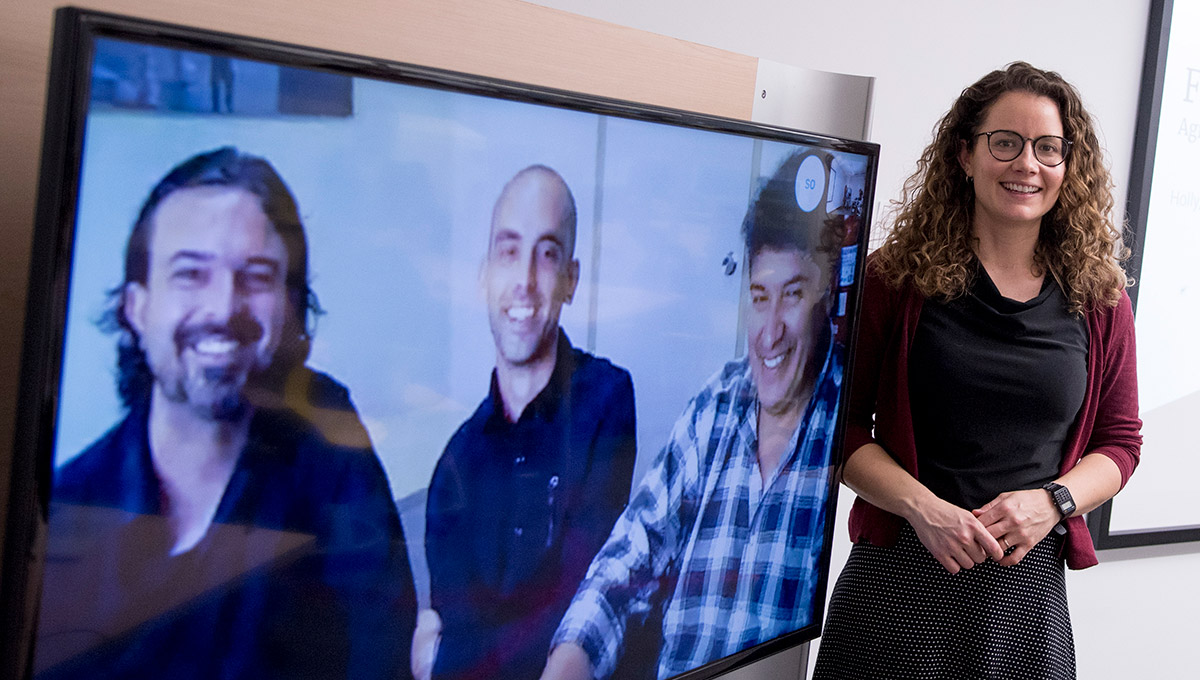
Instructor Marylynn Steckley and the team in Lima
“The goal is to take Peru away from import dependence, and maximize local engagement in the economy. This can be done by posting inspirational pictures of produce, and beautiful dishes, with recipes attached. We need to revalorize Peru’s local produce by showing consumers what they can create with locally sourced options. Take food blogs – bold and bright photography will surely have consumers wanting to cook their own version of a dish and share their creation.”
Sharing – whether it’s bold pictures or bright ideas – is a big part of the experience of this new class. The focus on group work and experiential learning replicates work experience in critical ways.
“We have a requirement in the program to do international experience,” says Ogden, “but we don’t all have the time or financial resources to go away and do something. This was a really good option for that, and even just to learn about group work. You get a different dynamic working with someone every day.”
Friday, April 6, 2018 in International, Student Experience
Share: Twitter, Facebook
